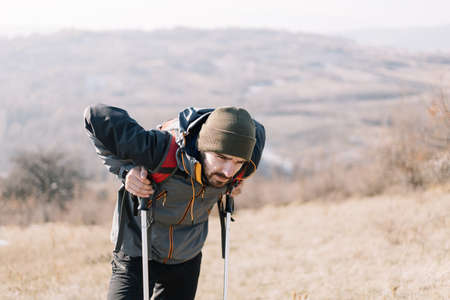1. Finding Affordable Trails Near You
Getting started with hiking doesn’t have to cost a fortune—there are plenty of ways to find free or budget-friendly trails all across the United States. Here’s how you can locate great places to hike without spending a lot of money.
Use Free Trail Apps and Websites
Technology makes it easier than ever to discover nearby hiking spots. Many apps and websites show user reviews, difficulty levels, and whether there are any fees. Here are some popular options:
| App/Website | Features | Cost |
|---|---|---|
| AllTrails | Extensive trail database, maps, reviews, filters for free trails | Free version available |
| Hiking Project | User-generated trail info, GPS tracking, offline maps | Free |
| Google Maps | Search parks and public lands, see photos and directions | Free |
| Parks & Rec Websites | Official info on local and state park trails, events, fees | Free access online |
Tapping Into Local Resources
Your community is a goldmine for hiking information. Visit your city or county’s Parks & Recreation department website—they often list all nearby trails and note which ones are free. Local outdoor groups on Facebook or Meetup can also provide recommendations for hidden gems that don’t charge entry fees.
Libraries and Visitor Centers
Libraries sometimes have guidebooks you can borrow for free. Visitor centers at state or national parks often offer free maps and advice from rangers about easy-access trails.
Navigating Public Lands Across the US
The US has millions of acres of public lands perfect for hiking. Here’s a quick guide to common types:
| Type of Land | Description | Typical Cost | Examples |
|---|---|---|---|
| National Forests | Vast open lands with hundreds of trails; usually no entry fee, but parking may cost a few dollars. | $0–$5 per vehicle (many areas free) | Coconino National Forest (AZ), White Mountain National Forest (NH) |
| Bureau of Land Management (BLM) Lands | Open spaces for recreation, often less crowded than parks. | Mostly free or minimal fees for parking/camping. | Bishop BLM Lands (CA), Red Rock Canyon (NV) |
| State Parks and Local Parks | Diverse trails near cities; many have small day-use fees. | $0–$10 per day; many local parks are always free. | Cuyahoga Valley NP (OH), Griffith Park (CA) |
| Urban Greenways & Nature Preserves | Paved or natural-surface paths in towns/cities; almost always free. | Free | The BeltLine (Atlanta), Central Park Trails (NYC) |
Tip: Look for “Fee-Free” Days!
Many national and state parks offer special days each year where entrance fees are waived—check their websites or social media so you can plan your hikes around these dates.
You don’t need fancy gear or expensive memberships to get outside and enjoy nature. With a little research using the tools above, you’ll be exploring beautiful trails in your area in no time—all while keeping your wallet happy!
2. Essential Gear on a Budget
Getting started with hiking doesn’t mean you need to empty your wallet on fancy equipment. With some smart strategies and a bit of creativity, you can find all the gear you need without overspending. Here’s how you can get fully outfitted for your next adventure while sticking to your budget.
Start with the Basics
When it comes to hiking gear, focus on what’s truly necessary. You don’t need the latest high-tech items to enjoy the outdoors. Here are the essentials you’ll need:
| Gear Item | Why You Need It |
|---|---|
| Sturdy Shoes or Boots | Comfort and protection for your feet on rough terrain |
| Weather-Appropriate Clothing | Layer up for changing conditions; avoid cotton for moisture management |
| Backpack | Carry water, snacks, and extra layers easily |
| Water Bottle or Hydration System | Stay hydrated throughout your hike |
| Map or GPS (Phone App) | Avoid getting lost and plan your route safely |
| Basic First Aid Kit | Handle minor injuries or blisters on the trail |
| Sunscreen and Hat | Protect your skin from sun exposure |
Smart Ways to Save Money on Hiking Gear
1. Check Out Thrift Stores and Secondhand Shops
Your local Goodwill, Salvation Army, or neighborhood thrift store can be treasure troves for outdoor gear at low prices. Look for jackets, backpacks, water bottles, hats, and sometimes even hiking boots in good condition.
2. Borrow from Friends or Family
If you’re just starting out, ask around! Many hikers have extra gear they’re willing to lend. Borrowing is perfect if you want to try hiking before committing to buying your own equipment.
3. Join Community Gear Swaps or Buy Nothing Groups
Many communities host gear swap events where you can trade items you no longer need for something useful—often at no cost. Check out Facebook groups like “Buy Nothing” in your area or look for local outdoor clubs that organize these events.
4. Shop Online Marketplaces
Websites like Craigslist, Facebook Marketplace, and OfferUp are great places to find gently used gear from other hikers nearby. Always check photos carefully and meet sellers in safe public locations.
Budget Tip: Prioritize What You Buy New vs Used
| Buy New If Possible | Safe to Buy Used/Secondhand |
|---|---|
| Socks & Underwear (for hygiene) | Packs & Backpacks (if structurally sound) |
| Shoes/Boots (only if fit & wear are good) | Trekking Poles, Water Bottles, Rain Jackets |
You don’t have to break the bank to enjoy America’s amazing trails. With these tips, you’ll be ready to hit the trail with everything you need—and a little extra cash left over for post-hike snacks!
![]()
3. Packing Smart: What to Bring and Skip
When you’re just starting out with hiking, it’s easy to feel like you need all the latest gear. But you don’t have to spend a fortune to enjoy the trails. Packing smart means focusing on the essentials that keep you safe and comfortable, while skipping the fancy extras that can weigh you down—and drain your wallet.
Must-Haves vs. Nice-to-Haves
Let’s break down what you really need in your backpack versus what can wait until later or isn’t necessary at all:
| Must-Have Essentials | Nice-to-Have Extras |
|---|---|
| Comfortable sneakers or sturdy walking shoes | Specialized hiking boots (for easy trails, sneakers work fine!) |
| Weather-appropriate clothing (layers are best) | Name-brand outdoor clothing |
| Reusable water bottle (filled up at home) | High-tech hydration packs |
| Simple snacks (trail mix, granola bars) | Energy gels or specialty foods |
| Sunscreen and hat for sun protection | Expensive UV-protection shirts and accessories |
| Basic first-aid kit (band-aids, antiseptic wipes) | Comprehensive survival kits (for day hikes, keep it simple) |
| Printed map or downloaded offline trail app | GPS devices or satellite messengers (unless you’re heading way off the grid) |
| Fully charged cell phone for emergencies | Action cameras or selfie sticks |
| Poncho or trash bag for unexpected rain | Name-brand rain jackets (affordable options work too) |
| Backpack you already own (as long as it’s comfy!) | Specialized hiking backpacks with extra features |
Packing Tips to Save Money and Weight
- Borrow before you buy: Ask friends if you can try their gear before investing in something new.
- Avoid overpacking: The lighter your bag, the easier and more enjoyable your hike will be—plus, you won’t be tempted to buy unnecessary gadgets.
- Repurpose what you have: A regular backpack, gym clothes, and household snacks often do the trick for beginner hikes.
- Bargain hunt: Check out thrift stores, online marketplaces, or community gear swaps for affordable options if you do want to upgrade.
- Think safety first: Don’t skip on basics like water, snacks, a map, and a charged phone—these are always worth carrying.
With these guidelines in mind, you’ll be ready to hit the trail without overspending or overpacking!
4. Transportation Hacks for Hikers
Getting to the trailhead can be one of the biggest expenses when hiking, especially if you don’t own a car or live far from your favorite trails. Luckily, there are several budget-friendly options commonly used in the U.S. to help you get outdoors without spending too much.
Carpooling: Share the Ride, Split the Cost
Carpooling is a popular and eco-friendly way to reach hiking destinations. Not only do you save money by sharing gas costs, but you also reduce your carbon footprint. Check out local hiking groups on Facebook, Meetup, or apps like CarpoolWorld to find fellow hikers heading to the same trail. Many outdoor clubs organize group hikes where transportation is coordinated in advance.
Public Transportation: Affordable and Accessible
Many American cities have buses or trains that stop near popular trailheads or parks. Public transit is often much cheaper than driving and parking. Before you go, check the websites of your local transit authority for special weekend routes or park-and-ride options. Some areas even offer shuttles directly to state parks during peak seasons.
Sample Public Transit Options
| City/Region | Transit Option | Popular Hiking Destinations |
|---|---|---|
| Los Angeles | Metro Bus/Train + Park Shuttle | Griffith Park, Angeles National Forest |
| Seattle | Sound Transit + Trailhead Direct Shuttle | Mount Si, Cougar Mountain |
| New York City | MTA Train + Local Bus | Bear Mountain, Harriman State Park |
| Denver | RTD Bus & Light Rail | Boulder Flatirons, Chautauqua Park |
Ride-Sharing Apps: Flexible for Small Groups
If public transit isn’t available or convenient, ride-share services like Uber and Lyft are another option. These are especially useful if you’re traveling with friends and can split the fare. Some areas even have ride-share pick-up zones at popular trailheads. Always check fare estimates before booking and try to avoid peak pricing times for the best deal.
Quick Tips for Saving on Transportation:
- Plan ahead: Organize your trip with friends to maximize cost savings.
- Avoid solo rides: The more people in your group, the cheaper it gets per person.
- Check for discounts: Some transit systems offer weekend or student rates.
- Pack light: It’s easier to use public transit or share rides when you travel light.
- Start early: Early trips usually mean cheaper fares and less crowded transport.
No matter your location or budget, these transportation hacks make it easy and affordable to get outside and enjoy the beauty of America’s trails!
5. Making the Most of Your Local Hiking Community
Getting involved with your local hiking community is one of the smartest ways to save money while starting your hiking journey. Not only will you gain access to valuable advice, but you can also find opportunities for sharing gear and participating in budget-friendly events. Here’s how you can tap into these resources and make new hiking friends along the way.
How to Connect with Local Hikers
Many American cities and towns have active hiking groups that welcome newcomers. These groups often organize regular hikes, skill workshops, and social gatherings that are either free or low-cost. Here are some popular ways to connect:
| Resource | How to Access | Potential Benefits |
|---|---|---|
| Meetup.com Hiking Groups | Search for “hiking” in your area on Meetup.com | Join group hikes, meet local hikers, get event invites |
| Facebook Hiking Communities | Search Facebook Groups by state, city, or trail name | Ask questions, find gear swaps, share ride offers |
| REI Co-op Events & Classes | Check REIs website for local store events | Attend affordable skills clinics and guided hikes |
| Local Parks & Recreation Departments | Visit your city’s parks website or office | Sign up for free or discounted guided walks and workshops |
| Appalachian Mountain Club (AMC) | Explore AMC’s regional chapters online | Access group hikes and member gear rentals |
Sharing Gear and Swapping Tips
If you’re just starting out, there’s no need to buy everything at once. Many local groups organize gear swaps or lend gear to members, making it easy to try out hiking without a big investment. Don’t be shy—most experienced hikers are happy to share advice about trails, boots, backpacks, or even let you test their equipment before you buy your own.
Tips for Getting Involved:
- Attend a beginner-friendly hike: Look for “Intro” or “easy” level events to meet others who are also starting out.
- Ask about carpooling: Splitting rides saves money on gas and parking fees—plus, it’s a great way to make friends.
- Volunteer for trail maintenance days: Many organizations offer perks like free lunch or future event discounts in exchange for helping out.
- Watch for free clinics: Outdoor retailers and clubs often host free talks on navigation, safety, or packing light.
- Mention you’re a beginner: Group leaders can offer extra guidance and help match you with suitable trails and partners.
The Benefits Go Beyond Saving Money!
Tapping into your local hiking community not only helps you hike on a budget but also gives you a support network of fellow outdoor lovers. You’ll learn faster, feel safer on the trail, and have more fun exploring America’s beautiful landscapes together—all without overspending.


